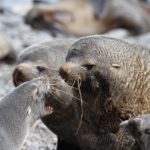On the annual variability of Antarctic aerosol size distributions at Halley research station
20 April, 2020 by Anna Jones, Neil Brough, Thomas Lachlan-Cope
The Southern Ocean and Antarctic region currently best represent one of the few places left on our planet with conditions similar to the preindustrial age. Currently, climate models have low…











































